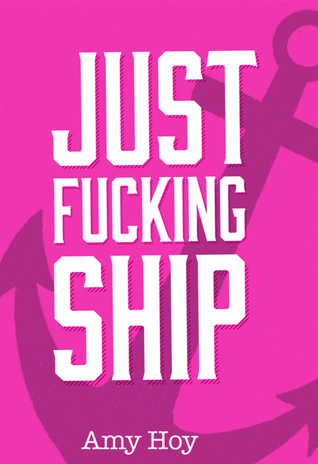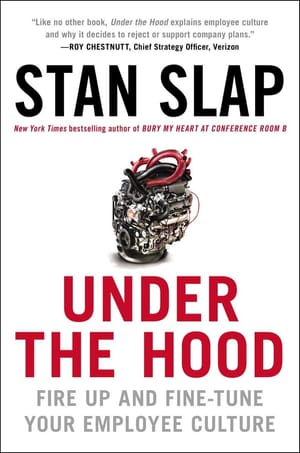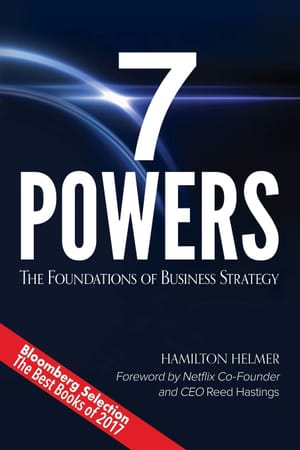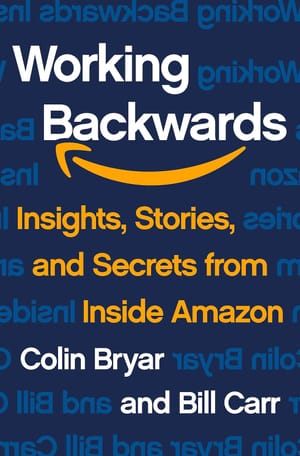
This is a summary of a great 🌿 branch book. I intend this post to be a comprehensive summary for myself, but you should definitely buy the book anyway — it's that great. Read more about book classifications here.
Have you ever started a side project … and never shipped? Have you ever told yourself that you’d start a blog, proceed to buy a domain, installed some blog software and then … posted nothing?
One of the most surprising solopreneurship lessons for me over the past couple of months has been the idea that shipping is a skill. A skill! It’s a skill regardless of whether you’re trying to ship software, start a side business, finish a book or launch a website. And, like any other skill, you can learn it, practice it, and get better at it over time.
Just Fucking Ship by Amy Hoy is a branch book that focusses on shipping as a skill. The book consists of 21 techniques that Hoy uses to ship her products. She wrote the entire JFS book in a 24 hour period — in response to Nathan Barry’s 24 Hour Product Challenge — and sold it in its incomplete form roughly 15 minutes after the 24 hour mark.
This post is a comprehensive summary of the book — but I still recommend you buy it. Hoy has a particularly engaging writing style, and the examples she uses to underscore each technique are all drawn from her experiences. She ‘walks the talk’ — even in the writing of the book itself — and the book is all the more powerful for it.
1. Always Consider Your Guest
Hoy opens with the idea that shipping a product is just like throwing a dinner party. And yet — for some weird reason — most of the principles we instinctively do when we’re preparing a dinner go right out the window when we’re trying to build and ship a product.
For instance: do you prepare peanut dishes when you have a dinner guest with peanut allergies? Of course not! Similarly, when you’re building your thing, don’t just focus on making — focus also on asking the important questions:
- What do these people like?
- What do they need?
- What would be the worst fit for them?
- What drives them crazy?
A direct implication of this is that the best products to start shipping are tightly focused ones. Don’t write a book titled ‘Everything You Need To Know About Consulting’; write a book titled ‘Double Your Freelancing Rate in 14 Days’.
It’s much easier to write for a specific audience pain-point, and it takes far less time to complete.
2. Set a Deadline … And Mean It
A cut-off date is good for everyone. When you’re preparing a dinner party, you don’t tell your guests to come “whenever”. You tell them to “show up at 7!”
So pick a deadline. And mean it.
You’re probably not going to hit your deadline at first. You’re probably going to be a little bit late, or perhaps a whole lot late. But just setting a deadline and taking it seriously will force you to make significant progress.
Hoy notes that she long struggled with tight deadlines. And most of us do, too: we have had bad school and work experiences, or we’ve been burnt too many times by setting absurd deadlines that we’ve learnt not to set them in our side project work.
But Hoy then argues that the framing is mistaken:
Deadlines aren’t a flexing of arbitrary power. Deadlines are a tool to help you get what you want. A deadline you choose yourself isn’t a threat of punishment or failure — it’s a fun challenge to get excited about. Something to run towards and tackle. To show you can do it.
With two caveats:
- You must really want to finish the project you’ve set a deadline on.
- You should follow the rest of the techniques in the book, which will replace ‘The Pressure’ of deadlines with constant, measurable progress.
The whole ‘deadlines are ok!’ spiel sounds a little absurd if — like me — you’d not have had a good experience with deadlines. But Hoy argues that framing deadlines as a challenge (and then setting them!) is just one part of JFS. The other techniques will make deadlines more approachable, which then leads us to …
3. Work Backwards
When you’re serving a roast dinner at 7pm, you don’t start cooking at 5pm. You know a roast will take hours. So what do you do? You plan ahead.
When it comes to dinner parties, we all instinctively understand this. Hoy points out that we do backward math all the time: if a roast takes eight hours, we know to start cooking eight hours before the dinner party starts. Which means ingredient prep has to start an hour before those eight hours! And on it goes.
When it comes to projects, however, we tend to forget our dinner party planning. We finish a unit of work and then look forward, asking ourselves “ok, what next?” This is incredibly bad.
So what’s the solution? The solution is — just like you would in a roast dinner — you make a backwards plan! A proper Thanksgiving dinner is more involved than starting nine hours before service; Hoy notes that putting together all the dishes requires prep — ingredient shopping, cooking and freezing the sauce, marinating — days in advance. Similarly, for a project, you should start from the completed product, and then work backwards, asking:
- What’s the end result look like, exactly?
- How many chapters/videos/features?
- What is absolutely required, what’s nice to have?
- How perfect does it have to be?
- How long will each of these take?
- What has to come first?
- What do I need to prepare?
- How long will that take?
- What do I need to find out?
- How long will that take?
- How much, or how little, defines success? And who controls that?
The rest of the techniques help you answer these question, which then slots into your backwards plan.
4. Break It Into Pieces
Making a whole Thanksgiving dinner is an overwhelming task. So you don’t start with the ENTIRE spread — you start with one small task: you make the cranberry sauce. Then you mix the stuffing. Then you stuff the bird. Then you bake the bird. And on it goes.
Similarly, when working on a project. Don’t do multiple things at a time. Box yourself in to focus only on the individual components. This accomplishes two things: it allows you to focus, and it gives you the joy of accomplishment at completing one component in a single sitting. This joy keeps motivation high, and allows you to make continued forward progress.
(Sidenote: in knowledge work, a component is often stages of the ‘same’ thing. Example: a writing outline. Then a first draft. Then a first edit. Or … a set of tests, then the implementation for those tests, then reload, then more tests … and so on.)
5. Get Crispy
Get crispy means get specific, vivid, detailed. Crispy things have hard edges, and the hard edges are how you know you’re done.
Hoy argues that when you’re outlining the work for your backwards plan, you should get crispy with every stage of the product:
- DON’T write a book “about consulting”. DO focus on a specific crispy problem: “Get Clients Now”.
- DON’T call your app “user friendly”. DO explain that your new customer could “Log time with 4 key strokes”.
- DON’T promise that “you’ll learn CSS.” DO offer, “How to use the new flexbox module to get exactly the layout you want.”
If you’re specific with every stage of your product — from product definition all the way down to specifications for each feature — you’ll find that you’ll be more likely to finish the product and ship.
6. Start Small
If you’ve never done a dinner party before, don’t invite The Queen of England and plan a seven-course extravaganza. That’s self-sabotage.
This is obvious to us when it comes to cooking, but not when it comes to projects.
The way to JFS is to start small. If shipping is a skill, then learning that skill implies that it’s doable to practice on smaller, easier projects first. Plus, getting wins under your belt is how you gain the motivation to try on ever more ambitious projects!
Hoy counsels:
Don’t set out to write a book on day 1. Write blog posts, instead. Answer questions. Share your knowledge in crispy bits. If your blog posts turn out well, you can roll them into your future book at any time. You don’t lose a thing.
Don’t set out to build a huge web app on day 1. Write about the problem space. Do drawings. Create a small library. Create & ship a single feature app (like a micro-site). You’ll learn a lot about what it’s like to work with complete independence, and if you play your cards right, even your writing and your single-feature app could be very useful to your future users. You can always roll it into a bigger app later. You don’t lose a thing.
Limit your exposure to risk, increase your chances of success. The pleasure and self-esteem that comes from finishing something small but good will drive you on.
7. Start On The Atoms, Not On The Edges
Atoms are discrete, small units of work. Sometimes, atoms serve as building blocks for latter stages of your project.
For a Thanksgiving dinner, turkey stock is a necessary component for multiple other dishes. So making the turkey stock first is an atom that can be reused and repurposed for other parts of the dinner!
Conversely, making the cranberry sauce is discrete, small unit of work — an atom — even if it isn’t a component in something else. So why make it in advance? Hoy says that the benefit of starting on an atom is that you get the satisfaction from finishing it. Many other steps involved in making a Thanksgiving dinner require multiple steps, or lots of waiting, so she wanted something that would make herself feel good about making forward motion.
For projects, this looks like:
Choosing a tool, library, process, or vendor... procrastination on which has been delaying you.
Organizing a free webcast with some people in your industry, which later on could turn into a real (even paid) event.
Outlining a process your reader can apply to their work (like this one!) — just tell it to them now at a high level. Later you can turn it into a whole educational experience, or even create a tool or software to support the process, once proven its usefulness.
That’s why start on atoms: they either give you a component to reuse for latter stages of your project, or they give you a sense of satisfaction and forward motion that keeps you going. In a sentence: atoms can be tactical or emotional.
(Sidenote: if you’re a developer or designer, don’t fall prey to NIH (Not Invented Here) syndrome. These ‘atoms’ are fake work, because they don’t actually bring you closer to helping your customer. Remember: always consider your guest. They won’t care if you use pre-built software to deliver your product. More on this in technique #9).
8. Track Your Progress
When it comes to preparing a dinner party, you get visual, visceral feedback on your progress as dishes accumulate in the fridge or your dinner table.
When it comes to projects, recreating this visceral feedback is equally important. Use a project management tool with the ability to see completed tasks. Give yourself the joy of watching a progress bar move and of saying “Hey! I finished something!” even when it doesn’t feel like it.
There’s an interesting insight here: when using a kanban board like Trello, don’t disappear the completed cards in the Done list. Let it accumulate, and feel the satisfaction from watching the Done list pile up.
Hoy has a whole bunch of other hacks to give her emotional pleasure. In one instance, her team holed up in a rented cabin in rural Austria to work on their product, Freckle Time Tracking. Hoy and co wrote their hit list on little slips of paper, and burnt them in the wood-burning stove when they completed them. As she puts it: “Fixing bugs isn’t awesome. Watching them burn is awesome.”
The two key insights here are that:
- Visible progress is a fantastic motivator.
- Emotional management — when it comes to the sense of forward motion! — really, really matters.
9. Shop The Shelf
This is particularly true for programmers and designers:
“I need a billing system to sell & deliver this SaaS. I know... I’ll build my own from scratch, exactly what I need!”“
Yuck, this default theme sucks. Before I start blogging & building my audience, I need to design my very own theme! It’s gonna be the bestest ever!”
“I’m going to lay this whole damn book out by hand in InDesign! The typography is going to make ‘em weep!”
This is a repetition of the earlier sidebar on Not Invented Here syndrome. The cure for this is to constantly remember: your job isn’t to ‘make the bestest thing’ or to ‘use custom software’, but to just f*cking ship.
If a thing doesn’t help the customer, does it matter? If your blog theme is perfect but you don’t have a plan for actually blogging, does it matter?
There’s enough things to do already when it comes to your product. Just shop the shelf. Buy what’s out there and use that in the service of building your product. If it’s really bad, you can always come back later and switch to custom. But then you almost certainly don’t.
10. Every Version Better
You don’t have to ship a perfect product. Why? Because every iteration of the product that comes after will be better.
The techniques JFS teaches doesn’t just apply to shipping version 1.0. It also applies to every version that comes after. This should be liberating: you can backwards-plan your way from version 10 all the way to what you have today. This then frees you to scope out a crispy sub-sub-set of a product you can ship now.
11. Learn From Recipes
Some cooks breathe cooking. They don’t measure, they eyeball; they don’t check recipes, they just do.
But that doesn’t mean that you can do that too. Trying to run without guardrails makes shipping so much harder. At some point, experienced cooks were clueless. They, too, learnt from ‘recipes’. As a newbie, it pays to learn from known recipes — techniques and paths that are well worn by others. This means copying playbooks from the pros:
Learn from those who came before. Watch how they do it. Read biographies. Look at corporate histories. Subscribe to blogs, follow on Twitter, and sign up for mailing lists; watch as people grow their skills, their businesses, and how. Ask what came before. Take notes.
Hoy learnt productised consulting from Basecamp, then the ‘recipe’ of building a business-oriented SaaS, then publishing a PDF book instead of a paper book. She learnt from the recipes of others by watching what they did.
12. Choose Your Difficulty Setting
When it comes to dinners, a ‘successful’ dinner party depends on two things 1) tasty food, but more importantly 2) great company.
When it comes to a formal dinner party, tasty food might matter. But when you’re hosting a dinner party as a get-together for friends, great company dominates as a factor for success! So there’s really only two factors to ensure a great social night: first, picking the right people, and second, giving them an environment where they’ll be their most charming selves.
And yet, it’s the food that always stresses everyone out. In truth, the food has only a tangential effect on your enjoyment, if your goal is to host a comfortable, social get-together.
The point Hoy is making here is that success or failure of a project (or dinner party!) isn’t an objective state of reality. It is instead a frame that depends on the observer. You can choose this frame, exactly how you might choose other aspects of your project.
If you define a reasonable success metric, you set yourself up for success. Hoy gives us the story of shipping her first book:
Back in 2009, I was freaking out before the launch of my first ebook ever, Javascript Performance Rocks. My wise friend Erik Kastner disrupted the freak-out spiral with a simple question: “How many copies would you have to sell to be satisfied?” I hadn’t thought about it before. “50,” I said. Then I had a target — a crispy target — and I could calm down. We sold many more than 50, and all those extra sales were wonderful icing.
For JFS, I defined my definition of success: Immediate sales, and those customers getting immediate use. I would have been pleased with 200 copies sold in the initial launch. I aimed all of my effort towards achieving that goal, no more no less.
Today, JFS has sold about 900 copies. Those copies would never have been sold if she’d spent two years just polishing and not shipping. Her definition of success allowed her to ship an imperfect product — and from that imperfect product came sales beyond her wildest imaginings.
13. Mise En Place
When you’re cooking, you don’t prepare ingredients as the recipe calls for it. Instead, you prepare everything at one go, and have all the ingredients cubed, sliced, or prepped around you and waiting when you start cooking.
Similarly for projects, don’t start working only to pause mid-way to make decisions: “Hmm, what blogging software providers should I use, and where should I host it?” or “What do I want to write in this chapter?” Instead, have everything ready and ‘mise en place’ before you start working.
14. Niceties vs Necessaries
At her last Thanksgiving dinner, Hoy meant to serve popovers. But on the actual day, she found that they couldn’t prepare popovers in time (nor a salad, nor a toasted breadcrumb topping for a mashed potato casserole). So she got rid of all of those nice-to-haves.
And her guests didn’t care one whit! Why? Because they didn’t know! Hoy hadn’t promised it, and she knew that it wasn’t necessary to the success of the dinner.

The fact remains that despite the best backwards plan, and besides your best attempts to follow JFS, life can still throw you curveballs. And when that happens, you’ll face a dilemma: recover, or cave? That is: fight to recover the lost bit of work, or give in and give up?
In this scenario: if it’s not necessary, just let it go.
Hoy argues that separating the necessaries or niceties beforehand will save you from making the wrong decisions. The ‘beforehand’ part is key — when you’re near your deadline you will find yourself incredibly stressed, which makes it a really bad time to decide what’s worth keeping.
Keep a list, even if it’s only in your own head. Always know what you can drop. Then when the inevitable happens, you won’t have to sit & think & torture yourself. You’ll know what’s only nice-to-have.
Examples of true necessaries:
- beta content for a book.
- a couple of really excellent features for software.
- a couple of early cut videos for a video series.
Also necessary: whatever protects your customer from great harm. So things like a proper backup strategy and proper privacy protection matters from day one. But nearly everything else is negotiable.
Amy points out that when she first launched Freckle, they shipped with no invoicing, no timer, no budget notifications and terrible reporting. They didn’t even have an automated password reset — customers who lost their passwords had to email them, and wait for them to open the MySQL console.
That’s how willing they were to sacrifice features on the altar of niceties.
15. Cut Without Remorse
Linked to the last technique: cut without remorse! It’s easy to say “oh, split your feature list into niceties and necessaries.” But it’s emotionally difficult to cut your niceties when it’s time to do it.
Hoy argues: shipping is what makes a product a product. A non-product, hidden away from the world, helps nobody. It’s virtually worthless. But if you ship it, there’s the possibility that you can help someone — even just a single person!
The truth about shipping imperfect products is exactly the same as serving an imperfect dinner — in both cases, you’ll see the reality and compare it to the imagined, perfect product in your head and feel disheartened. But your customers (and your guests!) can’t see inside your head — so nobody will know what was left out of your shipped version!
Hoy urges you to accept reality: life will interfere with your plans. You will have to choose what features to leave out, and you will have to cut.
So: just cut and ship. And don’t look back.
16. Feeling To Fact
The hard bit about JFS aren’t the techniques themselves. Those are easy to understand and implement. The hard bit about practicing JFS is about overcoming the negative feelings that emerge when you try to put the techniques into practice.
Hoy has seen this a lot. She teaches a course on shipping products called 30x500, and it’s the biggest problem she sees in her students.
The first thing Hoy dispenses with is the idea that you’re feeling fear. Fear, she asserts, is a real physiological response coupled with subjective interpretation of the symptoms. For instance, if you’re really feeling fear, you’ll experience:
- sweating
- heart skipping
- butterflies in your stomach
- a hot, itchy feeling in your muscles that make you want to pace or lash out
The feeling you get when you attempt to ship won’t display any of these symptoms. Instead, the feeling would be a subtle sliding away of attention. You’ll procrastinate. Or you’ll find something safe and doable to tackle.
Hoy asserts that what you’re feeling is uncertainty. This uncertainty stems from a few different sources:
16.a) Uncertainty about what to do
Maybe you don’t know what to do … or the project is incredibly big and you don’t know where to start. But if this is the case, then you should be able to solve this with a crispy backwards plan, a series of tasks that are chunked small and nice in your todo list, and a good system for tracking your progress.
16.b) Uncertainty about your ability
Maybe you’re unsure if you can do it. But then — why wonder? Try and find out! Since mistakes are inevitable, the best way to learn is to do! (My note: besides, trial and error is the best way to learn in business — and what is a small project but an attempt at something not yet known to man?) It’s far better to give it your best shot, ship, and learn from what happens!
16.c) Uncertainty about other people’s reactions
Maybe you’re uncertain if people will like what you create.
But then: as Amy Hoy suggests: why care? There has never been anything, or anyone in the entire history of humanity who was universally loved:
Of course there will be people who don’t like your work. Unless, of course... Do you think you can do better than Jesus? Jesus had haters.
16.d) Facts are better than feelings
The truth is that these feelings are lies that trick you. The facts are far more encouraging:
Everybody who does creative work has a process. No, it’s often not apparent from the work you actually see, because that’s at the end... that’s the work that survives. There is a process, guaranteed. Even you have a process. Maybe you’re thinking, “Well, I don’t have a process, I just do things,” — that’s proof. You actually flail around til something sticks and that is your process. It just sucks.
Everybody starts off sucking and must work to get better. You may “feel” instinctively that they don’t, but that’s because you haven’t been with them every day of their lives. Even Mozart had to have piano lessons as a child and his early compositions, while absolutely precocious, aren’t very good.
Nobody can please everybody, not even part of the time. Not even Jesus. Or Buddha. Or Mother Theresa. Or Gandhi. Or anyone, fictional or real. Nope, not even you. Sorry.
And therefore, the answer to these ‘feelings’ is to ignore all of them, in the same way that you ignore rain, and choose not to let a rainy day affect your mood permanently. This sounds trite, but that’s why JFS consists of systems, hacks, and techniques. When you feel uncertain and unhappy, work your way through those feelings by applying all the techniques that we’ve covered so far.
17. Mistakes Happen
You will make mistakes after you ship. Some of them will piss off readers. Some of them will piss of customers. Some of them will be angry at you.
While you can and should prevent the most critical failures: i.e. “Store credit cards securely, or use a platform that does. Create redundant off-site backups for your customers’ data. Be clear about what they are buying. Offer a refund policy. Do your best, within reasonable constraints.” Hoy also suggests that you accept mistakes as a fact of life. And then tackle them straight on.
If it’s a bug: “Oh, I’m sorry, that IS aggravating. I’ll fix it.” Then fix it, and let them know.
If it’s a customer misunderstanding: “I’m sorry it was unclear. Here’s a refund/I’ll help you now. Could you tell me, was there a way we could have prevented this problem for you in the first place?”
If a customer is pissed but not necessarily a total asshole: “I’ve fixed it/How can I make good on that for you?” — if they respond politely, help them.
If a customer is crazy angry and behaving badly, fire them politely: “I’ve refunded your money. Cheers.”If a customer asks for a refund, give it to them. It’s not worth the fight.
No use letting fear of mistakes keep you from shipping … which leads us to …
18. Firm Up Your Worst Case Scenario

It’s easy to angst over concerns with fuzzy borders. But when you examine these concerns to firm them up, they fade away like a mist in the sun.
The best thing to do when you’re overcome with vague, mist-y uncertainty is to make it specific, concrete and tethered. “So you can punch it,” Hoy says.
Consider the worst case scenarios for shipping your product:
- What’s the worst case scenario if you JFS that blog post?
- What’s the worst case scenario if you JFS that ‘salesy’ call to action?
- What’s the worst case scenario if you JFS that price increase?
- What’s the worst case scenario if you JFS an app without a feature that your competition has?
Will you die? Or go bankrupt? Or blow up your house?
Very rarely will your worst case scenarios come true. And for every plausible negative worst case scenario, you can totally work to prevent them beforehand.
19. Exploit the Pauli Principle
The Pauli Exclusion Principle states that two or more identical fermions cannot occupy the same quantum state within a quantum system simultaneously.
I’ve forgotten what that actually means (yay, 8am undergrad physics classes!), but the point Amy Hoy is trying to make here is that you can’t ship and unship at the same time. You can’t build your reputation and never, ever risk it. You can’t do and not do.
It’s tempting to put off shipping and building in the hopes that you’ll gain more from shipping or building later. But the theoretical benefits of the future are worth less than the immediate benefits of shipping now. If you ship now, you learn more. This far outweighs the imagined benefits of shipping later.
(This is similar to ‘Let Reality Be The Teacher’ — trial and error is a superior strategy in business.)
Hoy warns against conflating “‘money you could have made but didn’t’ with ‘money you lost’”. You shouldn’t wait for perfection or riches that may never come.
Just ship. It’s far better to do so.
20. Your Next Launch
Launching is itself a product. Hoy has a system for launching that delivers good results for her:
- 2-3 blog posts 2-4 weeks before, to build up my list
- and 3-5 emails starting 2 weeks or so before, to build anticipation, each one leading to the other
- announcing the launch date & time 2-3 days ahead
- reminding the list about the launch a few hours ahead...
- emailing once more when the launch begins
She notes that each of these steps are mini-products of their own. You’ll have to write those blog posts, emails, and reminders. You’ll have to set up your site and your mailing list. You’ll have to design and deploy call-to-actions across your site to get the conversions you desire.
Each of these steps are projects. You can then apply the whole JFS methodology — pick a deadline, make a backwards plan — to the launch sequence, as if the launch sequence were itself a project!
21. Create Good Habits
Hoy closes this book with a final note: that all of these techniques are difficult to do if they’re not turned into habits. So the final technique is to practice these techniques enough until you do them at the level of habit. That’s where she’s at right now, and why she can ship so many products over the past nine years or so.
Hoy has three tips for this section:
21.a) Keep good habits top of mind
When you first start doing a project, you’ll feel this awkward, just-getting-started feeling where everything is conscious and nothing is automatic. Hoy urges you to flip through the JFS book to remind yourself of the techniques, and then to take notes (which I’m doing with this blog post!), make a cheatsheet, create a process diagram — whatever works for you.
Then put them into practice with your blog post.
When you have some downtime, tackle the potential problems you might face:
- Write down the biggest bad habits that you have that prevent you from shipping.
- Take a few minutes to write about what you could do in response to those bad habits instead.
- Write those down on index cards and put them at your workspace, mise en place-style. Then, when you’re next struggling, pull them out and flip through them.
21.b) Use mindfulness to spot automatic behaviours
The goal of mindfulness is to become an observer of all your hidden mental processes — especially the processes or habits that prevent you from succeeding.
Hoy recommends these resources:
- This one-pager from Berkeley’s Greater Good Magazine.
- Where you go, there you are by Jon Kabat Zinn.
21.c) Build new habits
Hoy talks about habits a lot because the academic literature on habits show us that a significant portion of our behaviours and decisions are habits. To quote from Charles Duhigg’s The Power of Habit:
Habits, scientists say, emerge because the brain is constantly looking for ways to save effort. Left to its own devices, the brain will try to make almost any routine into a habit, because habits allow our minds to ramp down more often. This effort-saving instinct is a huge advantage. An efficient brain requires less room, which makes for a smaller head, which makes childbirth easier and therefore causes fewer infant and mother deaths. An efficient brain also allows us to stop thinking constantly about basic behaviours, such as walking and choosing what to eat, so we can devote mental energy to inventing spears, irrigation systems, and, eventually, airplanes and video games.
Hoy recommends three resources:
- Two videos on habits she made for her course 30x500.
- Then, sign up for Tiny Habits, a wonderful, free course offered by BJ Fogg, founder of the Stanford Behaviour Design Lab.
- And finally, Hoy recommends Duhigg’s The Power of Habit
Fin
Just F*cking Ship is a pretty awesome book. Nearly everything in the book is actionable, and the pain points Hoy talks about would be familiar to anyone who's tried to launch a side project or business in the past.
My main takeaway from the book — apart from the techniques I’ve summarised above, which are, you know, kinda the point of the book — my main takeaway is that shipping needs to deal with emotions effectively. The strength of many of Hoy’s techniques are that she takes psychological factors into account, and uses the emotional satisfaction of forward momentum to her advantage.
I’ll report back when I have positive results from JFS. But one thing is clear, I think: Amy Hoy knows what she’s talking about when she talks about just f*cking shipping. It shows.
Originally published , last updated .
This article is part of the Operations topic cluster, which belongs to the Business Expertise Triad. Read more from this topic here→




